


THE BERBERS OF NORTH AFRICA
The Sahara, with 3.5 million square miles, is the largest "hot" desert in the world. The Berbers appeared on the scene at the dawn of the Sahara's history. They are the original inhabitants of North Africa and occupied the region long before the arrival of the Arabs who brought with them their language and their religion, Islam. Historical records trace them back to the time of the ancient Egyptian empires and even earlier to the fifth century B.C. Berbers, once a fierce fighting force, have survived various Christian, Muslim and French conquests of the region and continue to maintain large communities throughout Morocco, Algeria, Tunisia, Libya, and Egypt. Today, although found all across the Sahara, they are especially concentrated in Sahara's western countries.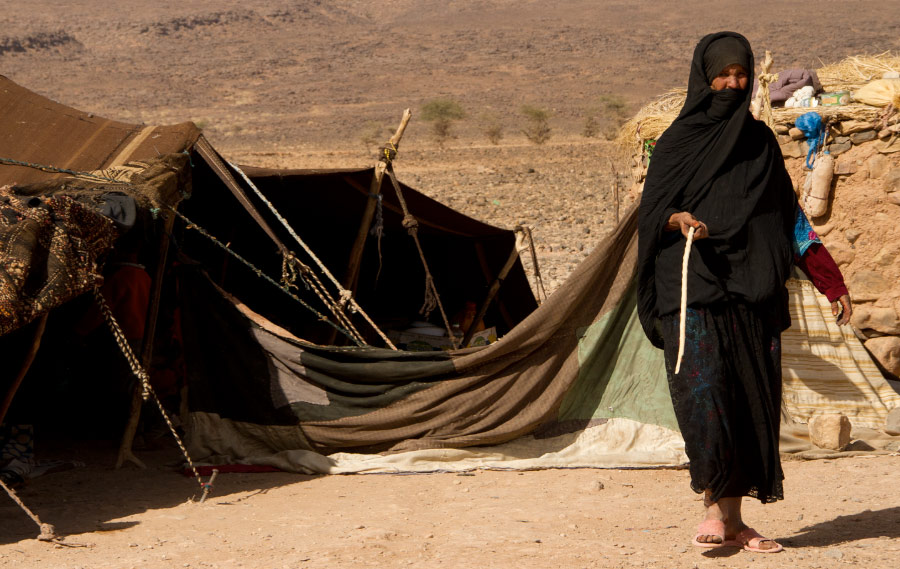
In the days of large camel trains consisting of hundreds of camels, Berber nomads took their caravans of camels across the Sahara, trading in goods such as dates, cloth, desert salt, gold and slaves. However, these days there are very few camel trains left; mostly they carry salt from the desert salt mines, but convoys of trucks are replacing them. Until recent years the Moroccan and Libyan governments banned Berbers from giving their children Berber names. Many North African countries banned the use of the Berber language and required Berbers to speak Arabic, the official language. In Libya the contribution by Berbers to Libyan culture was written out of history books. Recently, as a result of Berber protests and uprisings, countries such as Morocco and Algeria have recognized the Berber language and it is now taught in a few schools. An increasing number of Berbers speak one of their ancient dialects as a first language. Many speak three languages, Berber, Arabic and French.
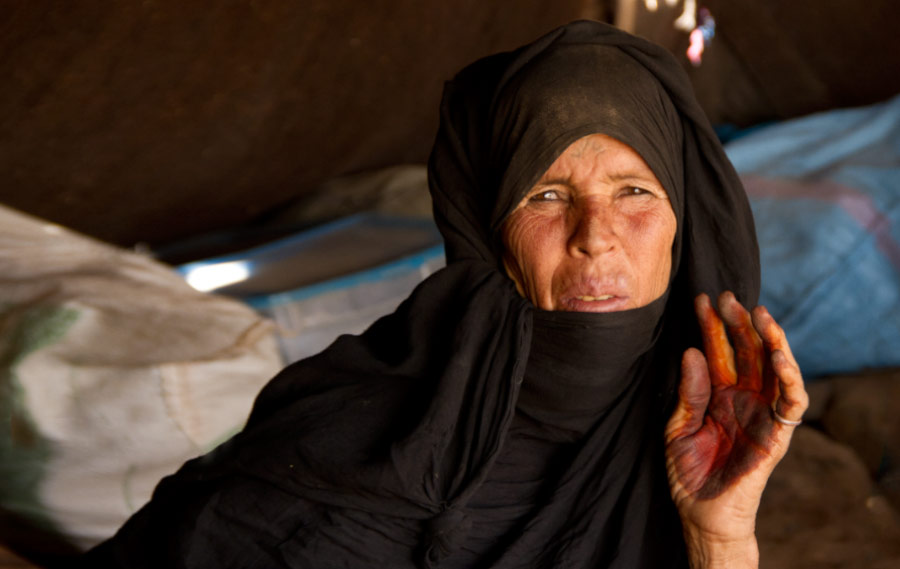
Traditionally, men take care of livestock. They migrate by following the natural cycle of grazing, and seeking water and shelter. They are thus assured with an abundance of wool, cotton and plants used for dyeing. For their part, women look after the family and handicrafts - first for their personal use, and secondly for sale in the souqs in their locality. The Berber tribes traditionally weave kilims. The tapestry maintains the traditional appearance and distinctiveness of the region of origin of each tribe, which has in effect its own repertoire of drawings. The textile of plain weave is represented by a wide variety of stripes, and more rarely by geometrical patterns such as triangles and diamonds. Additional decorations such as sequins or fringes, are typical of Berber weave in Morocco. The nomadic and semi-nomadic lifestyle of the Berbers is very suitable for weaving kilims. The customs and traditions differ from one region to another. In marriages, the man selects the woman, and depending on the tribe, the family often makes the decision. In comparison, in the Tuareg culture, the woman chooses her future husband. The rites of marriage are different for each tribe. Families are either patriarchal or matriarchal, according to the tribe. The social structure of the Berbers is tribal. A leader is appointed to command the tribe. It is a very hierarchical society.
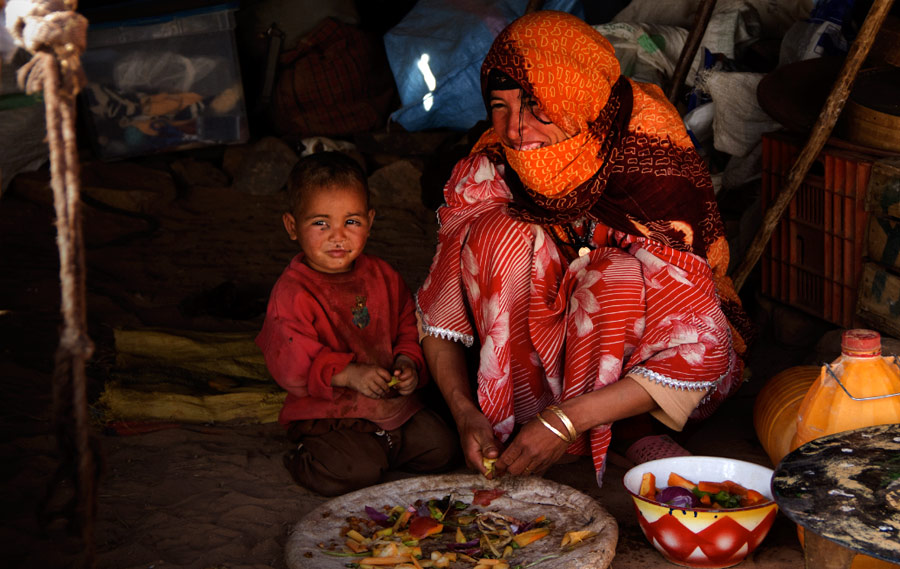
Berbers of the Sahara - The lowland desert Berbers are generally nomadic. Small groups consisting of medium or large extended families are found all across the Sahara. Desert Berbers live a very different lifestyle compared to their mountain brethren. Being nomadic, they move constantly across national borders. International boundary laws mean little to them as they follow the natural seasonal cycle of forage grazing, water and shelter. These people are born to move under the open sky and across unlimited horizons with their flocks of sheep, goats, and camels. Their wandering nomadic lifestyle is central to their way of life. Families subsist on goat milk, bread, dates, barley, couscous, mint tea, and butchered sheep, goats and sometimes camels. Their timetable is according to the sun, moon and the rare occurrence of rain. Today's Sahara Berber nomads live in the most inhospitable regions of Africa and often endure hardships including lack of water. With the increasing problem of global warming, their habitat is becoming more harsh and extreme. As water sources dry up and water tables drop, finding sufficient water for their herds is an increasing problem. Over the past 40 years, persistent drought has forced many Berbers to give up their wandering way of life. To survive, some have settled in villages where they cultivate land to ensure a steady food supply that is less vulnerable to a dry climate. These people have had to make many adjustments to their lifestyle including their homes. Their houses used to be tents, but are now built with mud bricks. Their diet has changed from one of meat, milk and cheese to one with more grains and vegetables. One advantage of the new lifestyle is that many children, including girls, are sent to school. This in turn opens new avenues of opportunity for educated Berbers.
READ More About Berber Culture
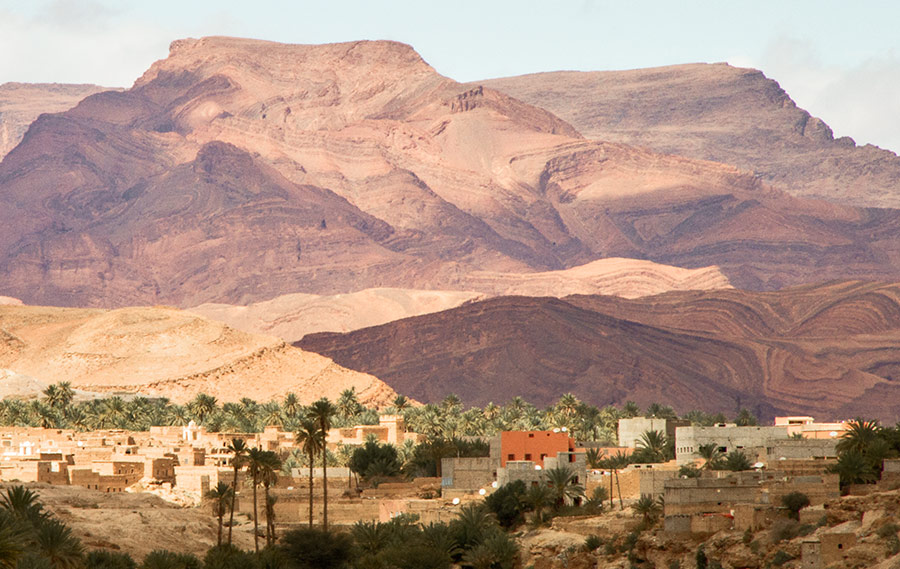
Berbers of the mountains - Large populations of Berbers live in the mountains to where they retreated to avoid advancing Arab conquerors. They generally dwell in small villages. Some villages are located in valleys, but many literally cling to the sides of steep mountainsides. Houses are terraced one above the other, crowded wall to wall and are usually constructed of adobe or rough cement. Small in size, villages are composed of family dwellings, a mosque, a grain-threshing floor, and a place for the assembly of the elders who govern the affairs of each community. Winters are brutal with snowstorms and snow and rock avalanches being the norm. Travel is on foot or by sure-footed donkeys. The trails are often so steep, narrow and precarious that many people and their animals are killed in falls. The mountain slopes in the vicinity of the villages are divided for pasturage and cultivation. In some fields non-irrigated farming is practiced for growing cereals. Land that is irrigated by diverting water from streams yields two crops a year—cereals in winter and vegetables in summer. Donkeys, cattle and goats are penned together on the ground floor of dwellings or in a central pen at night and graze on stubble and on fallow lands around the villages during the day. Sheep and goat herders follow a pattern of seasonal migration, grazing their sheep on low-lying land in winter and on the highlands in summer. Sheep and goats are more suitable to the mountain environment. The cattle appear thin and lack good health. It is not a friendly environment for cattle raising.

The unifying forces for the Berber people may be their shared language, belonging to the Berber homeland, or a collective identification with the Berber heritage and history. The Maghreb or western North Africa on the whole is believed to have been inhabited by Berbers from at least 10,000 BC. Today most Berber people live in Northern African countries, mainly in Algeria and Morocco.
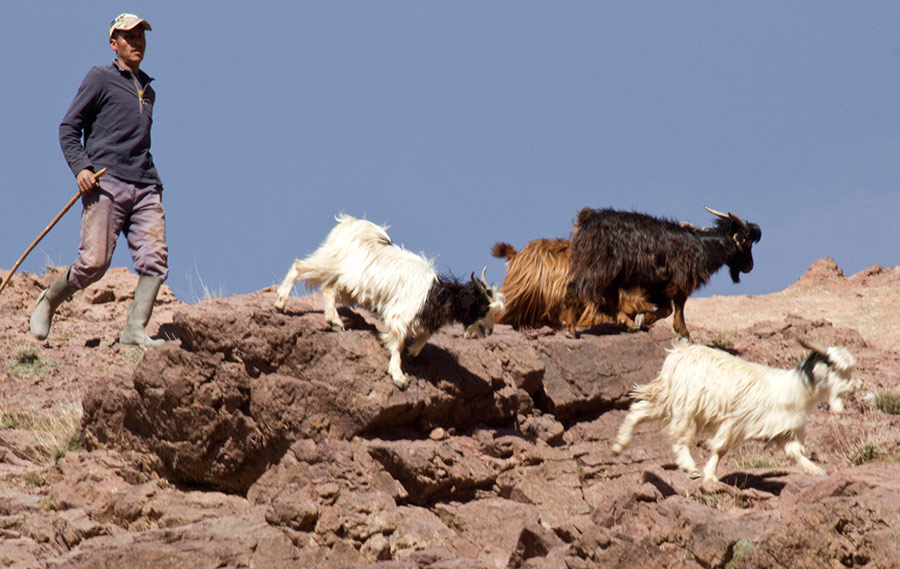
A Journey of Discovery With the Berbers
Bill and I had decided some time ago that we wanted to learn more about this enduring culture first hand, and when an opportunity to travel with a Berber family across the Sahara came along we jumped at the chance. Beginning in Morocco, we accompanied a twelve-member Berber family as they crossed the desert to link up with extended family members who were seeking an improved water supply. Drought and dropping water tables are an increasing concern in a desert where rainfall is minimal and sporadic. In total, we walked 900 miles with the family -- accompanied by four camels -- through four Sahara countries. Our route crossed into Algeria, Mauritania and Mali as we followed an ancient trade route first documented in the eleventh century. At times we were confronted by horizons that seemed impossibly far. We encountered vast plains of sand and rock, stretching ahead like unending mockery of our persistence. In places, the baked earth was nearly sterilized by extreme drought that had long ago inspired all living creatures to seek more friendly environments. But the Berbers are survivors in this harsh, unrelenting land. Our hosts were curious about the strangers who wanted to cross the desert and welcomed us into the hubbub of their daily life.
Back to [Enduring Cultures Index]
